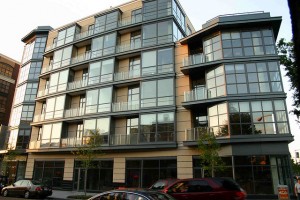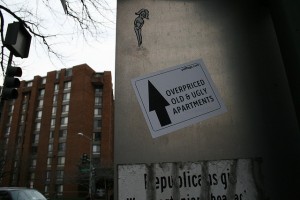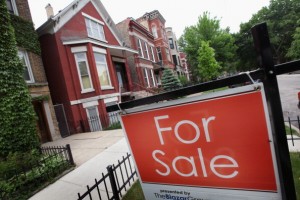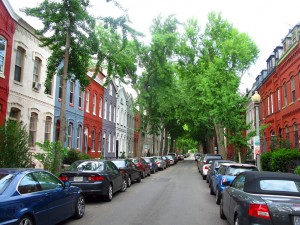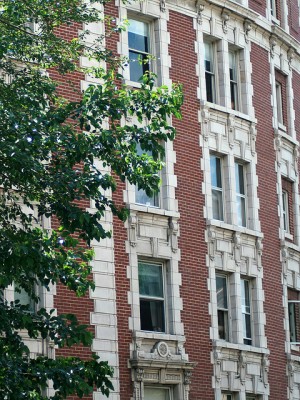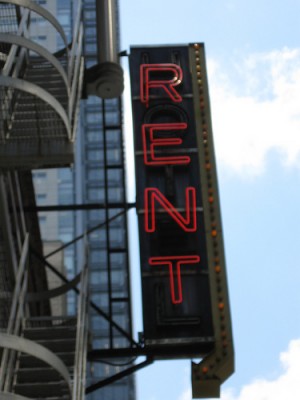A high-rise may be built on the parking lot of an affordable senior apartment building in the U Street neighborhood.
Jair Lynch Development Partners is proposing to build a nine-story, 95 unit building next door to the Paul Laurence Dunbar Apartments at 15th and V Streets NW. Last year, the developers partnered with residents to buy the senior building. As part of the developer’s current proposal, the senior building would get some upgrades but maintain its Section 8 senior housing status. Residents reportedly support the project, which still has a few more approvals to get before it can break ground.
The new building may be much more expensive than the Dunbar apartments as it doesn’t have the same U.S. Department of Housing and Urban Development requirements attached to it. Although it’s unclear at this point how much the units would go for, this is the same developer behind Solea Condominium just up the road. Units in that building were selling for around $600,000 when it opened in 2008.
The site of the senior building has a storied history — it was once home to the Dunbar Hotel, built in the early 1900s and the District’s premier hotel for elite African Americans. The affordable senior apartment building was built on the land in the 1970s, and it’s remained Section 8 even as the surrounding neighborhood saw housing prices skyrocket. A look at the proposed new building, sandwiched between the Dunbar apartments and St. Augustine Catholic Church, the oldest Catholic black church in the District, shows the same stark contrast between new and old buildings seen throughout D.C.
Jair Lynch Project




